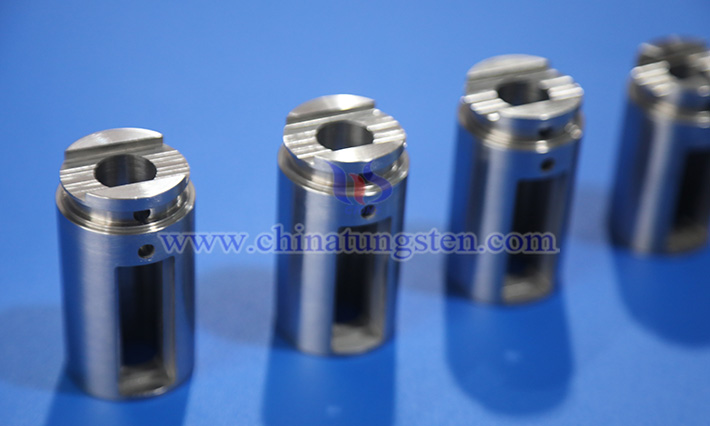What Are the Features of Tungsten Alloy Shielding Cans?
- Details
- Category: Tungsten Information
As a critical protective equipment in key fields such as the nuclear industry and medical radiation, the design and performance of tungsten alloy shielding cans are optimized around three core goals: efficient radiation shielding, stable and safe operation, and adaptability to complex scenarios, showcasing numerous unique advantages. Specifically, the key features of tungsten alloy shielding cans include the following:

I. Strong Radiation Shielding Efficiency
The effectiveness of radiation shielding hinges on a material’s ability to attenuate rays, and tungsten alloy stands out as an ideal shielding material due to its exceptional physical properties. With a density ranging from 16.5 to 18.75 g/cm³—far exceeding that of lead at 11.3 g/cm³—tungsten alloy can more efficiently absorb ionizing radiation such as gamma rays and X-rays under the same thickness. This not only saves material but also reduces the difficulty of handling and installing equipment.
Additionally, tungsten alloy offers significant shielding against neutron radiation. By incorporating metals like nickel and iron, its capacity to slow down and absorb neutrons can be further enhanced. This enables tungsten alloy shielding cans to adapt well to complex scenarios involving multiple types of radiation, such as providing reliable protection during the transportation of radioactive isotopes.
II. Excellent Mechanical and Chemical Stability
Radiation environments often involve harsh conditions like high temperatures, corrosion, and vibrations, which tungsten alloy shielding cans are well-equipped to handle due to their material properties. With a melting point of 3,422°C—far higher than that of low-melting-point shielding materials like lead—tungsten alloy resists deformation or melting in high-temperature radiation environments, maintaining structural integrity over the long term.
Chemically, tungsten alloy is highly stable, resisting reactions with common substances like water, acids, or alkalis. In the medical field, it can withstand corrosion from chemical reagents used in disinfection processes; in nuclear industry settings, it can resist erosion from radioactive waste liquids or gases, effectively extending the equipment’s service life. Moreover, tungsten alloy boasts good mechanical strength and toughness, with excellent impact resistance. Even if subjected to minor collisions during transportation or use, it is unlikely to crack or break, effectively preventing radiation leakage risks.

III. Good Environmental Safety
While traditional lead shielding materials are relatively low-cost, lead is a toxic heavy metal. Its disposal can significantly pollute soil and water sources, and lead vapor may harm the health of operators. In contrast, tungsten alloy is non-toxic and harmless, releasing no harmful substances even in high-temperature environments or when worn, meeting modern environmental requirements and greatly reducing the environmental burden of post-use disposal.
IV. Flexible Customized Design
Different fields have varying radiation shielding needs, and tungsten alloy shielding cans can be produced with flexible, perse processing techniques to meet these demands. For example, in the medical field, cans can be designed with different wall thicknesses and shapes to accommodate varying radiation intensities from radioactive drugs (e.g., iodine-131 or cobalt-60), ensuring the safety of medical staff and patients.
- Chinatungsten Online: www.chinatungsten.com
- CTIA GROUP LTD: en.ctia.group
- Tungsten News & Price: www.ctia.com.cn
- Molybdenum News & Price: news.molybdenum.com.cn
- Tel.: 86 592 5129696; Email: sales@chinatungsten.com




 sales@chinatungsten.com
sales@chinatungsten.com